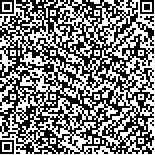本文已被:浏览 349次 下载 244次
Received:April 02, 2022 Published Online:September 20, 2022
Received:April 02, 2022 Published Online:September 20, 2022
中文摘要: 目的 探讨乳腺癌患者术后发生PICC导管相关性感染因素。方法 选择2020年7月至2021年12月在蚌埠医学院第一附属医院肿瘤内科住院符合研究条件的乳腺癌术后PICC置管的患者106例进行研究。收集可能影响乳腺癌患者术后发生PICC导管相关性感染的因素,根据有无PICC导管相关性感染将患者分为感染组与未感染组,比较两组患者上述各因素,并采用logistic回归分析评估各因素对乳腺癌患者术后PICC导管相关性感染发生的综合作用。结果 本次纳入的106例患者中共出现12例(11.32%)导管相关感染,共培养分离出21株病原菌,主要以革兰阴性菌为主(占57.14%),革兰阳性菌占38.10%,真菌占4.76%。多因素logistic回归分析结果显示,年龄、导管扭曲、导管内堵塞、敷料更换时间≥7 d、化疗药物外渗、穿刺次数>1次、置管时间≥6个月、白细胞计数升高、白蛋白水平下降、糖尿病为乳腺癌患者术后PICC导管相关性感染的危险因素(P<0.05)。结论 乳腺癌患者术后发生PICC导管相关性感染发生率较高。护理工作中除需要严格执行无菌操作外还可采用失效模式及效应分析(FMEA)干预方式加强对导管扭曲、导管内堵塞、敷料更换时间等因素的干预。
中文关键词: 乳腺癌 PICC导管相关感染 病原菌 失效模式及效应分析
Abstract:Objective To explore the risk factors of peripherally inserted central catheter (PICC)-related infection in patients with breast cancer after surgery. Methods A total of 106 breast cancer patients with PICC after surgery in the First Affiliated Hospital of Bengbu Medical College from July 2020 to December 2021 were selected and divided into infection group and non-infection group according to the patients with PICC catheter-related infection or not. After comparing the postoperative conditions between two groups and analyzing the influencing factors of postoperative PICC catheter-related infection, logistic regression analysis was used to evaluate comprehensive effect of various kinds of factors on postoperative PICC catheter-related infection. Results In 12 cases (11.32%) of PICC catheter-related infection, 21 strains of pathogenic bacteria were isolated, in which gram-negative bacteria accounted for 57.14%, gram-positive bacteria accounted for 38.10%, and fungi accounted for 4.76%. Multivariate logistic regression analysis showed that age, catheter distortion, catheter blockage, long dressing change interval (equal or more than 7 days), chemotherapeutic drug extravasation, more than one times for puncture, long time for PICC placement (more than 6 months), high leukocyte count, low albumin level and diabetes mellitus were the risk factors for PICC catheter-related infection(P<0.05). Conclusion In the patients with breast cancer after operation, the incidence of PICC catheter-related infection is relatively high. Failure modes and effects analysis (FMEA) model can be used to strengthen the safety management system of catheter and to establish appropriate time for dressing replacement, based on strict implementation of aseptic technique.
keywords: Breast cancer Peripherally inserted central catheter-related infection Pathogenic bacteria Failure modes and effects analysis
文章编号: 中图分类号:R737.9 文献标志码:B
基金项目:
| Author Name | Affiliation |
| YANG Jing, FENG Zhan-chun | School of Medicine and Health Management, Tongji Medical College, Huazhong University of Science and Technology, Wuhan, Hubei 430030, China |
| Author Name | Affiliation |
| YANG Jing, FENG Zhan-chun | School of Medicine and Health Management, Tongji Medical College, Huazhong University of Science and Technology, Wuhan, Hubei 430030, China |
引用文本:
